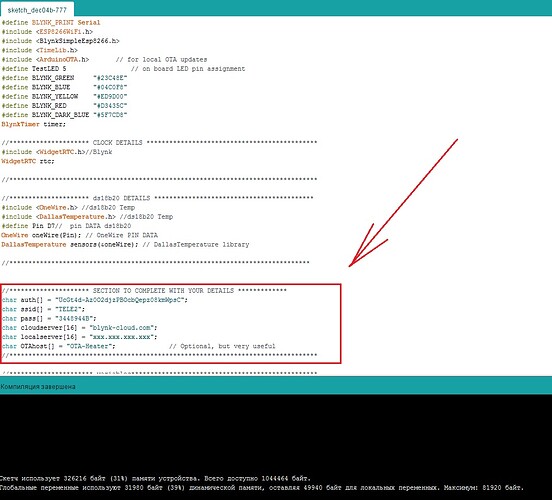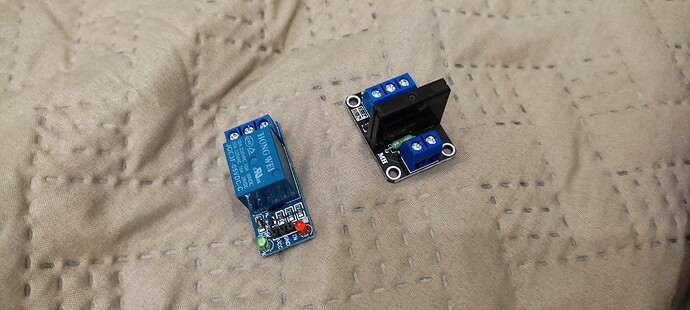12 posts were split to a new topic: Help with heating controller and scheduler
I want to repeat your project, share the finished sketch)) The one from the article in the blynk application does not go online (((
The QR code is for Blynk Legacy and won’t work with Blynk IoT.
If you want to get the project working with Blynk IoT then you’ll need to manually create the project and datastreams and add the appropriate widgets to the mobile dashboard.
Pete.
the widgets with the qr code were all transferred to me, esp8266 flashed, it connects to the wifi network, but in the application itself on the phone in the upper right corner the icon glows red, that is, not online. How to fix a sketch for a regular official blynk. I’m doing house heating for cats, it’s already cold)))
Now I found out that I have installed exactly Blynk the one that is old
Also in the sketch I did not see where the address of the ds18b20 sensor is written
I don’t understand either of these questions/statements.
Have you put your own SSID, WiFi password and Auth token in the sketch?
If you’re using the Blynk Legacy cloud servers then have you modified the Blynk.config command to reflect this?
The information you see in your serial monitor is you best debugging tool.
Pete.
Да, я ввел свой ssid, pass, token.
Подскажите что нужно изменить в Blynk.config ?
По последовательному монитору еще не проверял )
Версия Blynk которую использую: 2.27.32.
Please dont post screensots of code, copy and paste it bertween triple backticks.
Triple backticks look like this:
```
Can you tell me what to change in Blynk.config ?
This line of code tries to connect toi the localserver IP address, which is “xxx.xxx.xxx.xxx”
You need to change this so that it’s connecting to cloudserver
I haven’t checked the serial monitor yet
If you had then you’d probably have figured this out for yourself.
Pete.
Almost everything works. Only there are periodic disconnections.
Every 10-20 seconds it will connect, then disconnect…
I would suggest studying your serial monitor output and the timing of the disconnections to work out what is happening to cause the disconnections.
Are you powering your relay as in the original project? Does removing the relay help?
Pete.
Tell me which relays can be used? Low level, high level? Is it possible to use solid-state relays?
You can see from the code…
pinMode(TestLED, OUTPUT);
digitalWrite(TestLED, LOW); // set LED OFF
that the relay is active HIGH
I guess so, but it will depend on the relay.
Pete.
To where, and how are you powering them?
Pete.
Control wire D1, plus on 3V, minus on G. I also tried to connect the relay to 5V, there are no changes.
I put into action through the blynk application with the power button))
You probably need to provide additional power to the relay.
Pete.
Additionally, the relay power does not help
I’d suggest that you try some testing with an LED or test meter in place of the relay.
Pete.
There is a suspicion that I have a low-level relay, so nothing works. If the relay level is low, what changes should I make to the sketch?
The relay module in the picture is an active low relay, so
digitalWrite(TestLED, LOW);
Will turn on the led for example.
hi, has anybody used this project with a local server? I mean using it as legacy on a local blynk server (running it on a rapberry) and running the standalone blynk app on my smartphone) I can do it with old projects I have but the poblem with this project is that I didn’t export the layout on time before the real blynk server service was put of service so now the original QR can’t be used for recovering the layout of this project. Can anybody help me with this? Thanks.

